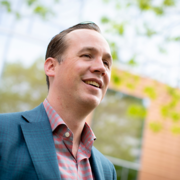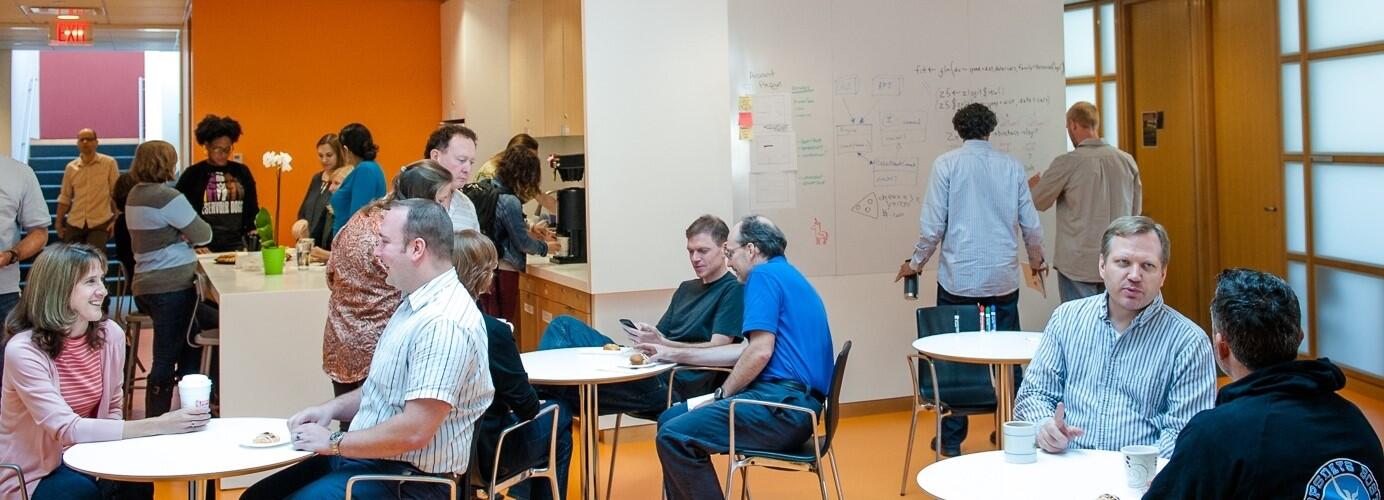
By Peter Reuell
Former Massachusetts Congressman and Speaker of the House Tip O’Neill was known for saying that “All politics is local.”
Ryan Enos has the data to prove it.
A Professor of Government, Enos has spent a large portion of his career exploring the everyday impacts of partisan segregation, and is the leader of a first-of-its-kind project that combines voter demographics with geographic data in an effort to understand how much individual people are exposed – or not exposed – to opposing political viewpoints.
“Segregation among groups is important,” Enos said. “And when segregation is spatial, it can have real consequences in how people relate to each other and how they live and cooperate in a democratic society. What’s new in our research is exploring how to measure how partisans are segregated.
“While it’s perhaps always been the case that people with different ideas lived in different places, the idea that partisan affiliation is something that’s a group identity, what some people call “tribal” may be relatively new,” he continued. “For example, it used to be a lot easier for someone who is a Republican to say, ‘I don’t mind if my daughter marries a Democrat,’ because people didn’t think of partisanship in the same way they thought of things like religion. But increasingly, it looks like people may think of partisanship in a way similar to religion.”
To help understand that segregation and its impacts, Enos and Jacob Brown, a Government Department PhD candidate, called on the Center for Geographic Analysis (CGA) at Harvard’s Institute for Qualitative Social Science (IQSS).
Beginning with a publicly-available database of all registered voters in the United States, the team calculated the distance to each of their 1,000 closest neighbors, then used the data to create maps which show, in a more detailed way than ever before, exactly how segregated the two political parties are.
“What we end up with is data that, depending on how you look at it, is kind of shocking,” Enos said. “For example, when we look at every Democrat in the U.S., and how exposed they are to Republicans… what you see is that the average Democrat has essentially zero exposure to Republicans. Republicans have slightly more exposure to Democrats, but it’s still very low. Even looking with the same neighborhood, we also see evidence that, Democrats tend to live closer to Democrats, and Republicans live closer to other Republicans within those neighborhoods.
“And because we have this individual-level data, we can take an individual person and look around them and say how many of their neighbors are in the same party, or how far down the street do they have to go to find someone of a different party. We couldn’t do that in the past, but now we can see how segregated people are in their day-to-day lives.”
Until recently, Enos said, measurements of partisan segregation were mostly centered around the idea that states were either “red” or “blue.” While recent efforts have tried to add more detail by zooming in to the county level, those efforts still miss much of the variation across the population.
“For example, we know there are some counties in Massachusetts, like Middlesex County that are very blue,” he said. “But even within Middlesex County, we also know there are places like Lexington that are much more red than Cambridge – they are very different places, but they’re in the same county.”
The end result, Enos said, is that this may contribute to partisan divisions becoming more calcified as they become aligned with other identities, including where a person lives.
“It used to be a person could be a liberal and still be a Republican, or a person could be a conservative and still be a Democrat,” he said. “But that’s not the case anymore…there are a lot of things shoving Americans apart, and partisanship is riding along with them, and we’re winding up in a situation where it looks like Republicans and Democrats may be living more apart then they ever were before.”
While the effects of partisan segregation remain unclear, Enos said there is reason to believe they may be similar to those seen from other types of segregation.
“People use (segregation) as a psychological shortcut,” he said. “This has been seen with race and religion in the past. People look out into the world and ask, ‘Are these people like me?’ If a white person is asking that about a black person, and sees that all the black people live in a different place, they are less likely to say they are like me.
“You can imagine the same thing happening with Republicans and Democrats – these cleavages between people converge in a way that makes this animosity even stronger,” he continued. “But, on the other hand, if you see a person and know they are like you, they live on the same street, they do the same things, your children go to school together, perhaps that can be lessened.”
And when it comes to politics, Enos said, the moderating influence of being exposed to other ideas may be even more important.
“In politics, we think the exchange of ideas matters,” he said. “If you never get those cross-cutting messages, then you’re losing a lot of information. And this seems to matter: if you look at cities where there’s less segregation between partisans, people are less likely to vote strictly for their party.”
 Aside from his work to understand partisan segregation, Enos is the founding director of the Harvard Digital Lab for the Social Sciences (DLABSS), an IQSS project aimed at upending the process of conducting social science research online.
Aside from his work to understand partisan segregation, Enos is the founding director of the Harvard Digital Lab for the Social Sciences (DLABSS), an IQSS project aimed at upending the process of conducting social science research online.
Launched about a decade ago, Amazon Mechanical Turk – an online service that pays users to perform simple tasks – quickly became a popular tool for social science because it allowed researchers to recruit large pools of study subjects. But the service isn’t without problems.
“One is just thinking about the data quality,” Enos said. “In many ways online workers are the model subjects in the social sciences, and in many ways that’s good, but they’re also being paid by the hour, so their incentive is just to rush through things as fast as they can, or even to lie about things because it may help them get more money.
“But the other side of that, from an ethical perspective …is that online workers are paid minimum wage or less,” he continued. “We wouldn’t pay our lab subjects that little, but we often do pay these online subjects that little.”
DLABSS addresses all those problems, Enos said, by relying entirely on volunteers.
“The great thing DLABSS brings to the table is the opportunity to unite the innovative side of online crowd-sourcing with volunteer subjects' intrinsic motivation,” said Amy Lakeman, a Government Department PhD Candidate who works as the DLABSS Director of Recruitment & Lab Manager.
Since launching the project in 2015, Enos and colleagues have recruited more than 16,000 volunteers from around the world who have taken part in hundreds of Harvard studies, which have been published in leading journals in political science, psychology and other fields.
“We've had the opportunity to work with social scientists across the university on some really interesting, cutting-edge projects,” said Austin Strange, Director of Research at DLABSS and Government PhD Candidate. “Our volunteers often tell us they enjoy the diversity in topics and types of surveys.”
“And our researchers value the resource of an unpaid, high-quality subject pool,” added Lakeman. “It's a win-win opportunity for learning on both sides.”
As the use of digital technology for the social sciences continues to mature, Enos said, he believes DLABSS can play a key role in how studies are conducted.
“One of the major advances in survey research in the last decade or so has been the idea to create consortiums and share the cost across several universities,” Enos said. “We’re looking to move DLABSS into something that Harvard will support, but that can include other universities that can help with subject acquisition so we can move beyond 16,000 subjects and imagine a day when we have 200,000 or 300,000 subjects.
“I think when we reach that point, that’s something that can upend Mechanical Turk,” he said. “We can move beyond some of the concerns we have and move towards a model that perhaps is better for everybody.”
